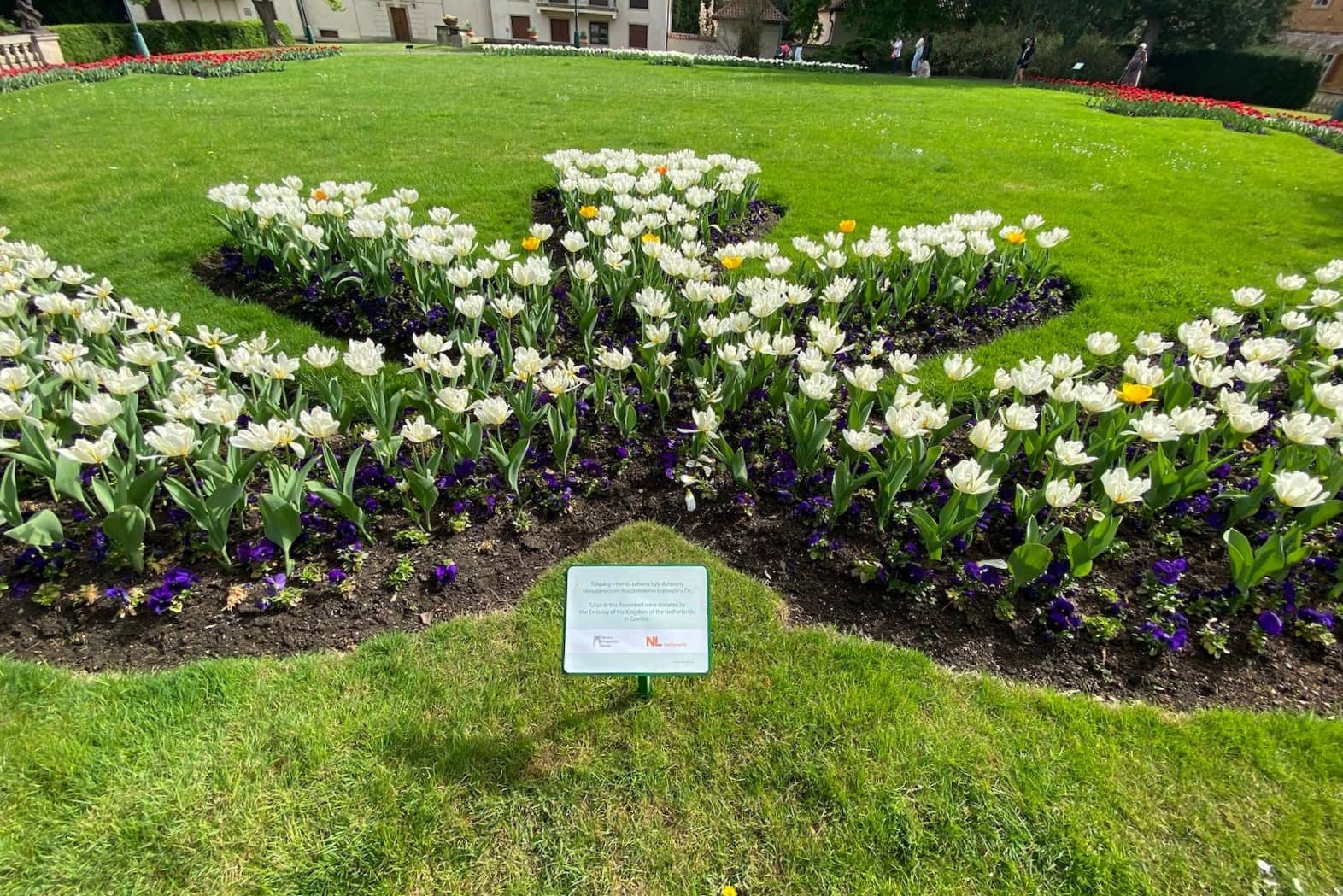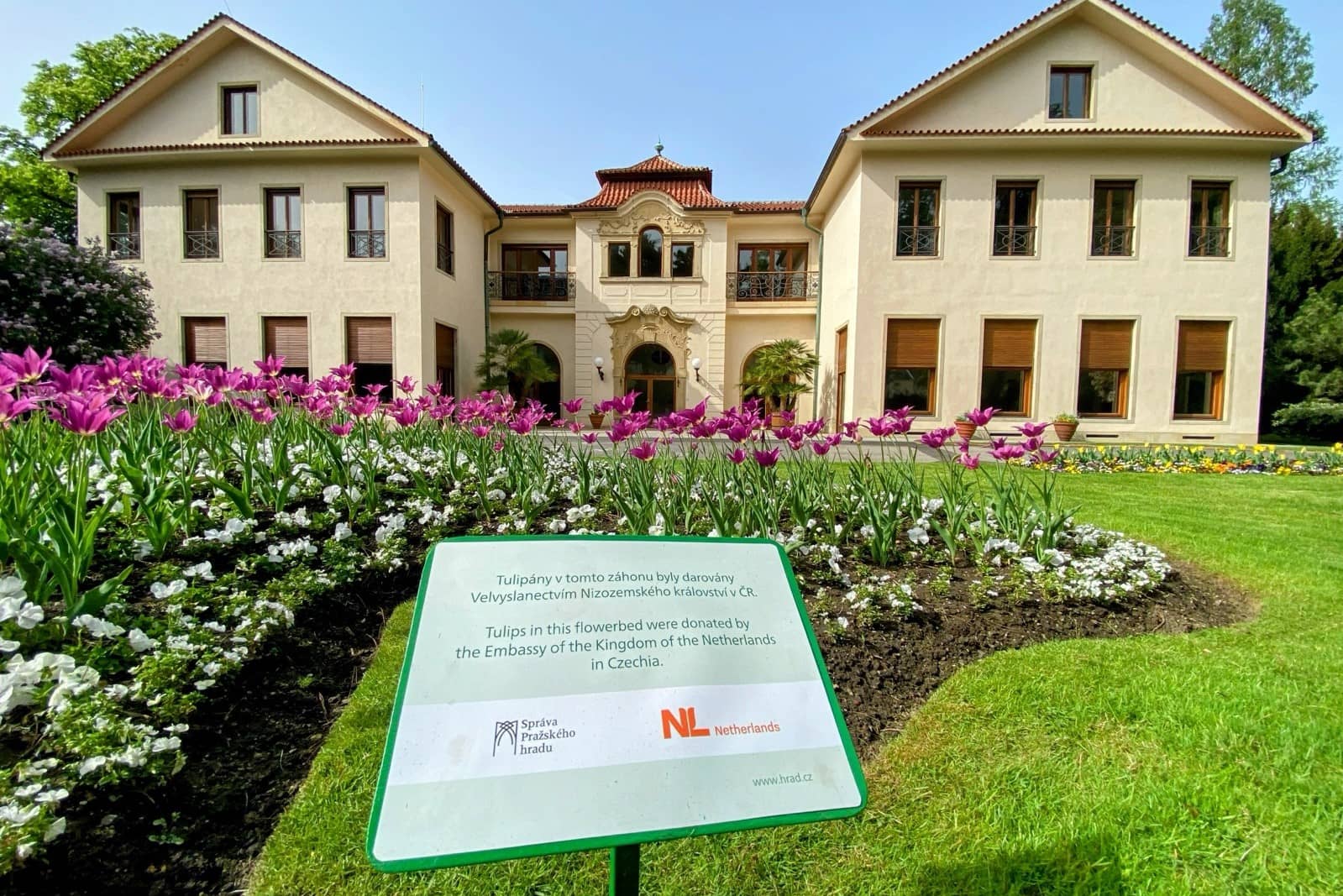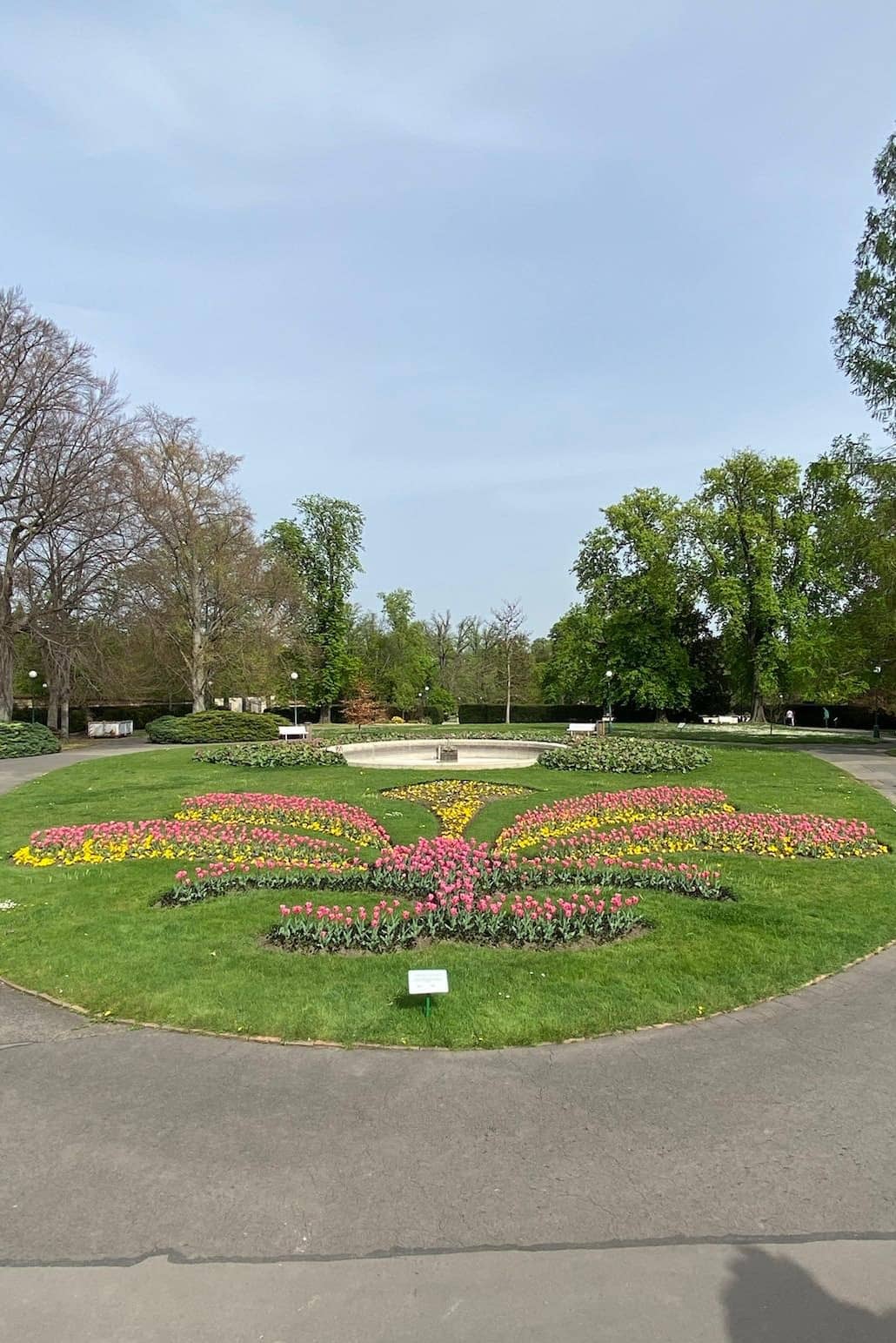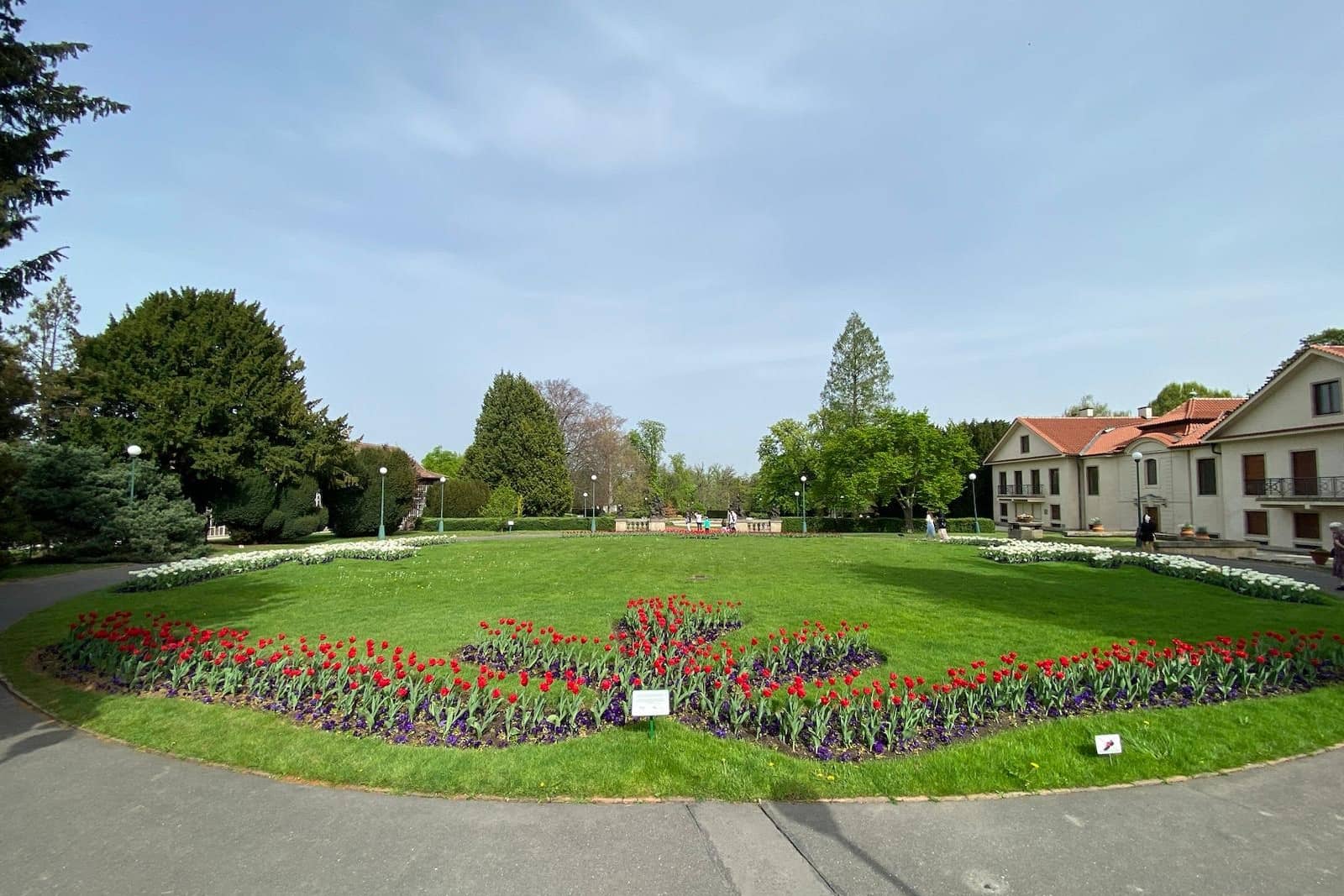Few flowers herald the arrival of spring quite like the tulip. With their cup-shaped blooms in a kaleidoscope of colors, tulips bring a burst of vibrancy to any garden. Their simple elegance and variety make them a must-have for any gardener seeking to enhance their outdoor space.
Beeld: © Prague Castle
No wonder that also the Royal Gardens of the Prague Castle incorporated those magnificent flowers in their garden arrangements. Tulips are to find in front of the Villa from 1938 known as Villa of doctor Eduard Beneš. The flowers were donated by the LAN-team accredited in the Czech Republic to promote the Dutch ornamental plants there. And the location for the tulips is indeed very prominent.
The building is located in the southwestern part of the Royal Garden at Prague Castle. A baroque orangery originally stood here. The central brick part of it has been preserved in the form of a gazebo, which was incorporated into a newly built villa for the then president of Czechoslovakia, Edvard Beneš, in 1937-1938. The new villa was designed by Pavel Janák, using a fragment of an older, Baroque building. It is an excellent example of his personal approach to the renovation of monuments. Presidents of the country lived in this villa until the mid-1990s, although Václav Havel did not use it much anymore.
The Royal Garden with the Presidential Residence is an important historical and cultural monument of the Czech Republic. Beneš's villa is an interesting example of modernist architecture, and the garden itself offers a beautiful setting for walking and admiring the views of Prague.
Dutch tulips can be admired at 3 locations, one is with 2000 tulip bulbs, one with 1500 and one with 1300. On all of these locations the tulips are planted in a specific a specific sjabloon either in baroque style or in modernist style and are combined with pansies.
The arrangements fit perfectly the Prague Castle gardens as they’ve changed in the time and aren’t kept in one style: The Royal Garden, for instance, began as a Renaissance design in the 1500s but now reflects a more English-style park with some Renaissance and Baroque elements.





